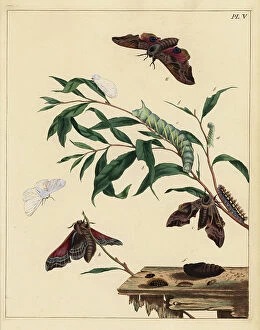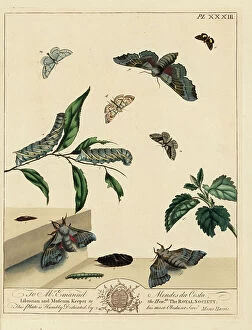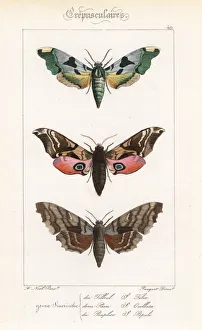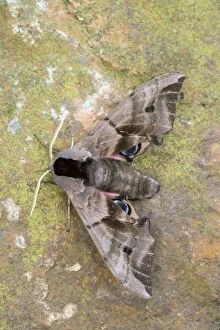Smerinthus Collection
The Smerinthus, also known as the Lime hawkmoth, Eyed hawkmoth, and Poplar hawkmoth, is a fascinating creature that belongs to the family Sphingidae
All Professionally Made to Order for Quick Shipping
The Smerinthus, also known as the Lime hawkmoth, Eyed hawkmoth, and Poplar hawkmoth, is a fascinating creature that belongs to the family Sphingidae. This group includes other intriguing species such as the Fig sphinx, Huckleberry sphinx, and Pawpaw sphinx moths. Among these magnificent creatures are also the Giant sphinx and Twin-spotted sphinx moths. Their large size and intricate patterns make them a sight to behold in nature's tapestry. One captivating interaction occurs between the Centaury plant (Centaurium erythraea) and the Eyed Sphinx moth. The plant's vibrant blooms attract this beautiful creature with its mesmerizing eye-like markings. Another notable member of this family is the Deaths head moth. Its skull-shaped pattern on its thorax has earned it a reputation for being eerie yet enchanting. Alongside it is its cousin, the Eyed hawk-moth (Smerinthus ocellatus), which showcases stunning eye-shaped spots on its wings. In Curtis British Entomology Plate 482, we can admire an exquisite illustration capturing every intricate detail of these marvelous creatures' anatomy. From their delicate pupae to their striking caterpillars adorned with vibrant colors and unique patterns - they truly are works of art created by Mother Nature herself. An additional illustration focuses on one specific feature: a hairy leg of an Eyed Hawk-Moth (Smerinthus ocellata). This close-up view allows us to appreciate even the smallest details that contribute to their remarkable beauty. Picture No. 10901290 portrays an extraordinary moment where an Eyed Hawk-Moth stands gracefully upon a twig. Its elegant posture highlights both strength and delicacy simultaneously - a true testament to nature's ability to create harmonious balance. The world of Sphingidae holds endless wonders waiting to be discovered through observation or study.















